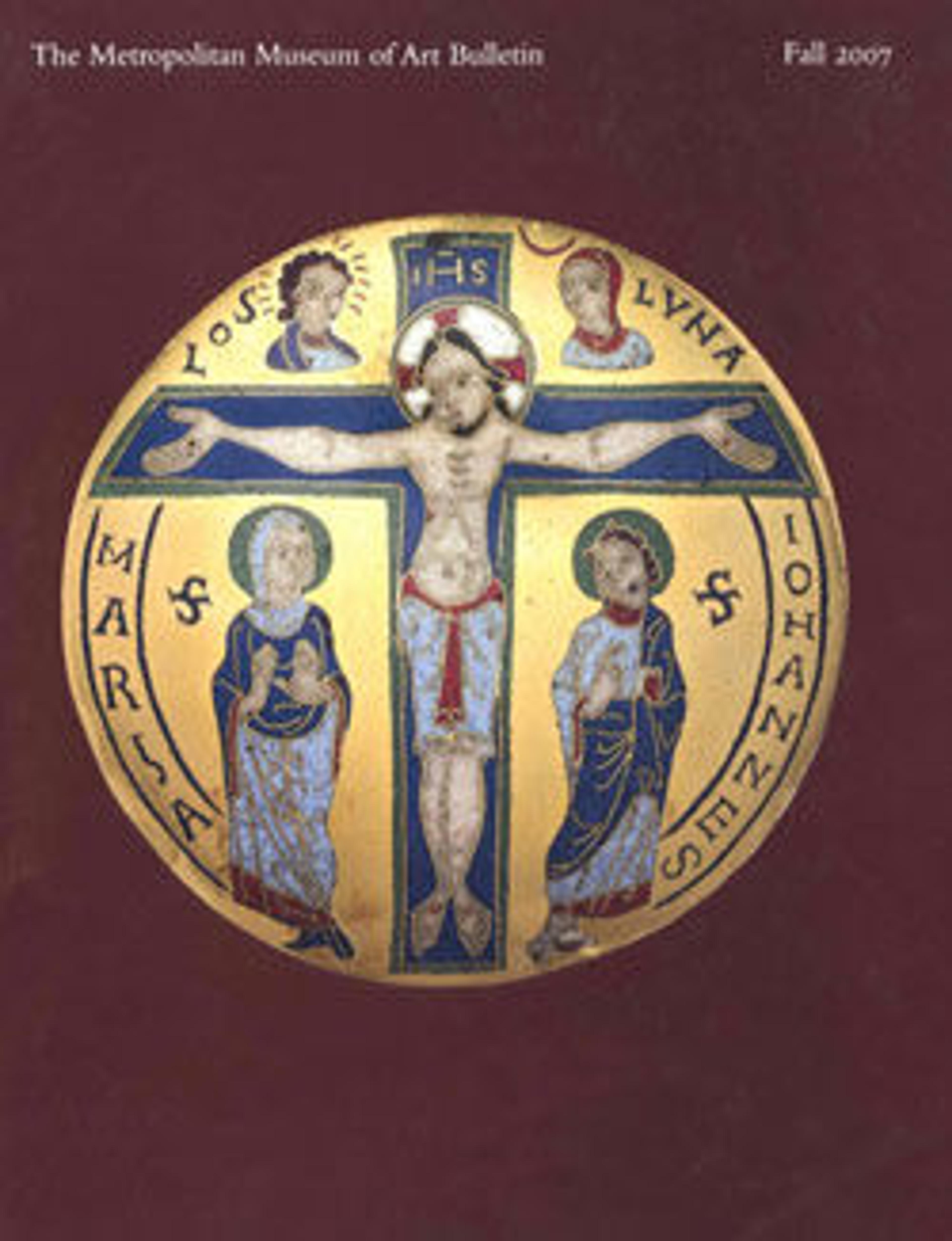The Sixth Patriarch of Zen at the Moment of Enlightenment
This small image, executed with a few brushstrokes in light ink, is Kano Tan'yū's reiteration of a legendary painting of the early thirteenth century by the renowned Southern Song Chinese painter Liang Kai (now in the Tokyo National Museum). It illustrates a Zen parable regarding Hui-neng (638–713), the sixth patriarch of Zen (Chan in Chinese), who suddenly found enlightenment as he was about to split a bamboo branch for firewood.
Tan'yū, the leader of the Kano school painters in Edo, kept copious pictorial records of works that he examined. Here, while clearly inspired by Liang Kai's painting, he skillfully manipulated broad ink washes to indicate the upper and lower parts of the body and eliminated details, leaving much to the viewer's imagination. The painting bears an inscription by Takuan Sōhō (1573–1645), one of the most prominent Zen monks in Japan's history, referring to a single strike of a knife that vanquishes all thoughts. The large seal below the colophon belongs to the Tayasu family, the house of the ninth Tokugawa shogun Ieshige (1711–1761), indicating the painting's previous ownership.
Tan'yū, the leader of the Kano school painters in Edo, kept copious pictorial records of works that he examined. Here, while clearly inspired by Liang Kai's painting, he skillfully manipulated broad ink washes to indicate the upper and lower parts of the body and eliminated details, leaving much to the viewer's imagination. The painting bears an inscription by Takuan Sōhō (1573–1645), one of the most prominent Zen monks in Japan's history, referring to a single strike of a knife that vanquishes all thoughts. The large seal below the colophon belongs to the Tayasu family, the house of the ninth Tokugawa shogun Ieshige (1711–1761), indicating the painting's previous ownership.
Artwork Details
- Title: The Sixth Patriarch of Zen at the Moment of Enlightenment
- Artist: Kano Tan'yū (Japanese, 1602–1674)
- Artist: Inscribed by Takuan Sōhō 沢庵宗彭 (1573–1645)
- Period: Edo period (1615–1868)
- Date: 1635–45
- Culture: Japan
- Medium: Hanging scroll; ink on paper
- Dimensions: Image: 40 x 9 1/2 in. (101.6 x 24.1 cm)
Overall with mounting: 70 1/2 x 10 in. (179.1 x 25.4 cm)
Overall with rollers: W. 12 in. (30.5 cm) - Classification: Paintings
- Credit Line: The Miriam and Ira D. Wallach Foundation Fund, 2006
- Object Number: 2006.174
- Curatorial Department: Asian Art
More Artwork
Research Resources
The Met provides unparalleled resources for research and welcomes an international community of students and scholars. The Met's Open Access API is where creators and researchers can connect to the The Met collection. Open Access data and public domain images are available for unrestricted commercial and noncommercial use without permission or fee.
To request images under copyright and other restrictions, please use this Image Request form.
Feedback
We continue to research and examine historical and cultural context for objects in The Met collection. If you have comments or questions about this object record, please contact us using the form below. The Museum looks forward to receiving your comments.
